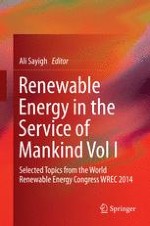
2015 | OriginalPaper | Buchkapitel
1. Development Model of Renewable Energy Policy for Sustainable Bio-Pellet Industry in Indonesia Using Interpretive Structural Method
verfasst von : Ir. Erwin Susanto Sadirsan, MBA, Prof. Dr. Hermanto Siregar, MEC, Prof. Dr. Eriyatno, MSAE, Evita H. Legowo
Erschienen in: Renewable Energy in the Service of Mankind Vol I
Aktivieren Sie unsere intelligente Suche, um passende Fachinhalte oder Patente zu finden.
Wählen Sie Textabschnitte aus um mit Künstlicher Intelligenz passenden Patente zu finden. powered by
Markieren Sie Textabschnitte, um KI-gestützt weitere passende Inhalte zu finden. powered by